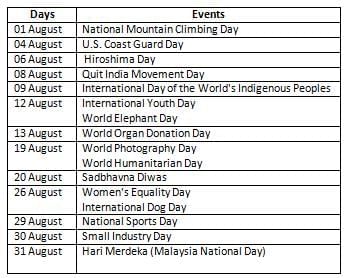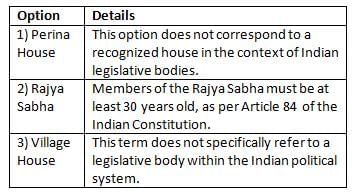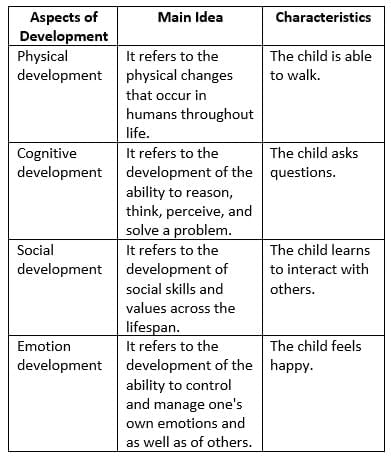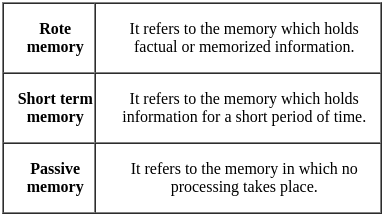RPSC RAS (Rajasthan) Exam > RPSC RAS (Rajasthan) Tests > RSMSSB Librarian Grade-III Paper 1 Mock Test- 4 - RPSC RAS (Rajasthan) MCQ
RSMSSB Librarian Grade-III Paper 1 Mock Test- 4 - RPSC RAS (Rajasthan) MCQ
Test Description
30 Questions MCQ Test - RSMSSB Librarian Grade-III Paper 1 Mock Test- 4
RSMSSB Librarian Grade-III Paper 1 Mock Test- 4 for RPSC RAS (Rajasthan) 2025 is part of RPSC RAS (Rajasthan) preparation. The RSMSSB Librarian Grade-III Paper 1 Mock Test- 4 questions and answers have been prepared
according to the RPSC RAS (Rajasthan) exam syllabus.The RSMSSB Librarian Grade-III Paper 1 Mock Test- 4 MCQs are made for RPSC RAS (Rajasthan) 2025 Exam.
Find important definitions, questions, notes, meanings, examples, exercises, MCQs and online tests for RSMSSB Librarian Grade-III Paper 1 Mock Test- 4 below.
Solutions of RSMSSB Librarian Grade-III Paper 1 Mock Test- 4 questions in English are available as part of our course for RPSC RAS (Rajasthan) & RSMSSB Librarian Grade-III Paper 1 Mock Test- 4 solutions in
Hindi for RPSC RAS (Rajasthan) course.
Download more important topics, notes, lectures and mock test series for RPSC RAS (Rajasthan) Exam by signing up for free. Attempt RSMSSB Librarian Grade-III Paper 1 Mock Test- 4 | 100 questions in 120 minutes | Mock test for RPSC RAS (Rajasthan) preparation | Free important questions MCQ to study for RPSC RAS (Rajasthan) Exam | Download free PDF with solutions
RSMSSB Librarian Grade-III Paper 1 Mock Test- 4 - Question 1
Which day is celebrated as the International Youth Day?
Detailed Solution for RSMSSB Librarian Grade-III Paper 1 Mock Test- 4 - Question 1
RSMSSB Librarian Grade-III Paper 1 Mock Test- 4 - Question 2
Which one of the following musical instrument is different from the other three?
Detailed Solution for RSMSSB Librarian Grade-III Paper 1 Mock Test- 4 - Question 2
RSMSSB Librarian Grade-III Paper 1 Mock Test- 4 - Question 3
Which of the following saints was a Muslim by birth?
Detailed Solution for RSMSSB Librarian Grade-III Paper 1 Mock Test- 4 - Question 3
RSMSSB Librarian Grade-III Paper 1 Mock Test- 4 - Question 4
Which of the following rulers laid the foundation of the Sisodia dynasty in Chittor?
Detailed Solution for RSMSSB Librarian Grade-III Paper 1 Mock Test- 4 - Question 4
RSMSSB Librarian Grade-III Paper 1 Mock Test- 4 - Question 5
'Walara' is a type of agriculture practice in which area of Rajasthan?
A. Banswara
B. Udaipur
C. Kota
D. Barmer
Detailed Solution for RSMSSB Librarian Grade-III Paper 1 Mock Test- 4 - Question 5
RSMSSB Librarian Grade-III Paper 1 Mock Test- 4 - Question 6
Which of the following members of the House should not be less than 25 years?
Detailed Solution for RSMSSB Librarian Grade-III Paper 1 Mock Test- 4 - Question 6
RSMSSB Librarian Grade-III Paper 1 Mock Test- 4 - Question 7
In which of the following ancient cities the remains of the canal have been found?
Detailed Solution for RSMSSB Librarian Grade-III Paper 1 Mock Test- 4 - Question 7
RSMSSB Librarian Grade-III Paper 1 Mock Test- 4 - Question 8
National Food Security Mission (NFSM) on wheat and pulses was launched in Rajasthan in the year-
Detailed Solution for RSMSSB Librarian Grade-III Paper 1 Mock Test- 4 - Question 8
RSMSSB Librarian Grade-III Paper 1 Mock Test- 4 - Question 9
The presiding officer of the Lok Sabha is called ________.
Detailed Solution for RSMSSB Librarian Grade-III Paper 1 Mock Test- 4 - Question 9
RSMSSB Librarian Grade-III Paper 1 Mock Test- 4 - Question 10
Which of the following powers is not vested in the Governor of Rajasthan?
Detailed Solution for RSMSSB Librarian Grade-III Paper 1 Mock Test- 4 - Question 10
RSMSSB Librarian Grade-III Paper 1 Mock Test- 4 - Question 11
Which organization won the 2024 Nobel Peace Prize for its efforts to achieve a world free of nuclear weapons?
Detailed Solution for RSMSSB Librarian Grade-III Paper 1 Mock Test- 4 - Question 11
RSMSSB Librarian Grade-III Paper 1 Mock Test- 4 - Question 12
Which of the following Indian states has the largest coastline?
Detailed Solution for RSMSSB Librarian Grade-III Paper 1 Mock Test- 4 - Question 12
RSMSSB Librarian Grade-III Paper 1 Mock Test- 4 - Question 13
Lal Nath ji was the saint of which of the following sects?
Detailed Solution for RSMSSB Librarian Grade-III Paper 1 Mock Test- 4 - Question 13
RSMSSB Librarian Grade-III Paper 1 Mock Test- 4 - Question 14
When was the Rajasthan Tourism Development Corporation (RTDC) established?
Detailed Solution for RSMSSB Librarian Grade-III Paper 1 Mock Test- 4 - Question 14
RSMSSB Librarian Grade-III Paper 1 Mock Test- 4 - Question 15
The largest producers of mustard in Rajasthan are:
Detailed Solution for RSMSSB Librarian Grade-III Paper 1 Mock Test- 4 - Question 15
RSMSSB Librarian Grade-III Paper 1 Mock Test- 4 - Question 16
Which of the following correctly identifies the broad domains of development?
Detailed Solution for RSMSSB Librarian Grade-III Paper 1 Mock Test- 4 - Question 16
RSMSSB Librarian Grade-III Paper 1 Mock Test- 4 - Question 17
Which of the following is NOT a level of awareness according to Freud?
Detailed Solution for RSMSSB Librarian Grade-III Paper 1 Mock Test- 4 - Question 17
RSMSSB Librarian Grade-III Paper 1 Mock Test- 4 - Question 18
Which Article of the Constitution provided for the Council of Ministers with the Chief Minister as its head to aid and advice the Governor?
Detailed Solution for RSMSSB Librarian Grade-III Paper 1 Mock Test- 4 - Question 18
RSMSSB Librarian Grade-III Paper 1 Mock Test- 4 - Question 19
The plateau richest in minerals in India is _______.
Detailed Solution for RSMSSB Librarian Grade-III Paper 1 Mock Test- 4 - Question 19
RSMSSB Librarian Grade-III Paper 1 Mock Test- 4 - Question 20
Name the app launched by SEBI to help investors manage their personal finances.
Detailed Solution for RSMSSB Librarian Grade-III Paper 1 Mock Test- 4 - Question 20
RSMSSB Librarian Grade-III Paper 1 Mock Test- 4 - Question 21
Which of the following is a sub-dialect of the Dhundari language?
Detailed Solution for RSMSSB Librarian Grade-III Paper 1 Mock Test- 4 - Question 21
RSMSSB Librarian Grade-III Paper 1 Mock Test- 4 - Question 22
Which of the following Prajamandals of Rajasthan did not participate in the Quit India Movement?
Detailed Solution for RSMSSB Librarian Grade-III Paper 1 Mock Test- 4 - Question 22
RSMSSB Librarian Grade-III Paper 1 Mock Test- 4 - Question 23
Alkanes are saturated hydrocarbons in which a bond is found between two carbon atoms. Which has a general formula _______.
Detailed Solution for RSMSSB Librarian Grade-III Paper 1 Mock Test- 4 - Question 23
RSMSSB Librarian Grade-III Paper 1 Mock Test- 4 - Question 24
In which district of Rajasthan cutting and polishing units of granite are found?
Detailed Solution for RSMSSB Librarian Grade-III Paper 1 Mock Test- 4 - Question 24
RSMSSB Librarian Grade-III Paper 1 Mock Test- 4 - Question 25
Recently, arsenic medicine has been mainly used for the treatment of?
Detailed Solution for RSMSSB Librarian Grade-III Paper 1 Mock Test- 4 - Question 25
RSMSSB Librarian Grade-III Paper 1 Mock Test- 4 - Question 26
How many women have been announced to be honoured with Padma Awards in the year 2024?
Detailed Solution for RSMSSB Librarian Grade-III Paper 1 Mock Test- 4 - Question 26
RSMSSB Librarian Grade-III Paper 1 Mock Test- 4 - Question 27
Which of the following is called "Radha of Rajasthan"?
Detailed Solution for RSMSSB Librarian Grade-III Paper 1 Mock Test- 4 - Question 27
RSMSSB Librarian Grade-III Paper 1 Mock Test- 4 - Question 28
Which of the following was the leader of the Begun Peasant Movement from 1921-23?
Detailed Solution for RSMSSB Librarian Grade-III Paper 1 Mock Test- 4 - Question 28
RSMSSB Librarian Grade-III Paper 1 Mock Test- 4 - Question 29
In this type of memory the content is in memory for a long time
Detailed Solution for RSMSSB Librarian Grade-III Paper 1 Mock Test- 4 - Question 29
RSMSSB Librarian Grade-III Paper 1 Mock Test- 4 - Question 30
Which of the following methods is helpful in the development of emotional maturity in children?
Detailed Solution for RSMSSB Librarian Grade-III Paper 1 Mock Test- 4 - Question 30
View more questions
Information about RSMSSB Librarian Grade-III Paper 1 Mock Test- 4 Page
In this test you can find the Exam questions for RSMSSB Librarian Grade-III Paper 1 Mock Test- 4 solved & explained in the simplest way possible.
Besides giving Questions and answers for RSMSSB Librarian Grade-III Paper 1 Mock Test- 4, EduRev gives you an ample number of Online tests for practice
Download as PDF





















